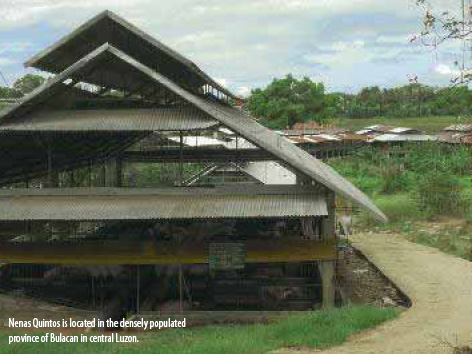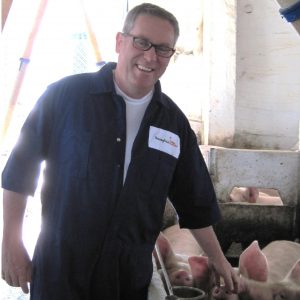Philippine pig farms stepping up biosecurity

While the Philippines still has a large backyard farm segment, swine production continues to move ahead in terms of consolidation, expertise and production levels. The closed 1,000 sow Nenas Quintos farms, located close to Manila, are a good example of the Philippines’ successful pig business.
There are currently more than 12 million pigs housed in the Philippines, which has a strong domestic market of 95 million people, but weak export markets. Many pork products are integral to Filipino cuisine, with firm favourites such as lechon kawali (fried salted pork belly), cicharon (dry pork skin and fat), bopis (spicy pig liver), dinuguan (pig intestines cooked in pork blood) and adobo pork stew.
The backyard farm sector is scattered throughout the 7,100 islands that make up the Philippines and probably comprise 70-80% of the total pig output. Many households hold some pigs throughout the year up until June, when they are often sold to provide an income for the family to pay for annual school tuition costs. Farm-gate prices therefore tend to peak in May.
Larger agribusiness operationsIn the larger agribusiness swine operations there is increasing integration (breeder and feed suppliers, finisher contractors) around the major cities and the number of smaller to medium-sized farms are also building up. What were once 100-sow farms are now 500- or 1,000-sow farms.
Some excellent farms in the Philippines are located in the agricultural province of Bulacan located close to Metropolitan Manila. Nenas Quintos farms are a well-run, 1,000 sow, single-site swine farming operation. The farms provide around 20,000 finisher pigs each year into the local dealer markets and slaughterhouses.
There are around 70,000 sows in the small and busy Bulacan province alone, which means all have difficult biosecurity issues due to the presence of numerous nearby farms.
At Nenas Quintos there is strong management control of the farrowing, weaner and finisher area operations, with well-cleaned facilities for breeder, nursery and finisher pigs. The farm maintains an excellent weaning weight of 8 kg, with low losses in wean-to-finish of only 6%. Slaughter weights tend to be low in the Philippines at 90 kg live bodyweight in the local markets.
Relatively high feed input prices are currently countered by good farm-gate prices. The high price and uncertain availability of coconut oil and cereals for animal feed, is often countered by the use of alternative meal ingredients placed into pig rations. The Nenas farms has taken this use of alternatives and by-products to new levels with on-site feed milling of a very wide range of alternatives. They currently use only 10% corn cereal in the final diets, with added components derived from bulk purchases (1 to 5 tonnes) of stale or unused noodles, biscuits, corn chip snacks, chocolate milk drinks, banana meal, coconut meal, chocolate snack bars, milk powder and others. As a result they are able to keep feed costs at 30% below the national average of 21 pesos (US$0.50) per kg. The farm has a closed herd, with both females and boars derived from on-site breeding programs. The managers and veterinarians are actively investigating new improved lines of Large White pigs from other suppliers; this breed is felt to provide the best all-round performance in tropical conditions.The finisher sheds have been constructed in a typical 800 to 1,000 head capacity in a set of adjacent sheds. Each shed has excellent curtain-sided ventilation and water-filled flush gutters for cooling. While American strains of PRRS were present on many Filipino farms, the closed farm structure in this herd has led to stable infections and low weaner mortality rates of only 1% to 3%.
PED
The farmer was having good success with the use of gut health stabilisers such as Sangrovit alkaloids to control some PED diarrhoea and poor performance in the finishers.
The Philippines is one of the few major pig producing countries with a major problem with the PED epidemic diarrhoea virus. Probably 100% of Filipino pig farms have been affected in the past five years and many farms complain of having regular re-occurring PED outbreaks – every six to 12 months, when specific immunity wanes in each breeding herd. There are no reliable vaccines on the market and the search is on for a good quality vaccine that will halt this common problem.On the upside, the Philippines’ pig industry has had great success recently in becoming free from Foot-and-Mouth Disease after a long struggle, particularly on the main island of Luzon. It is hoped that this can provide an incentive for increased pork exports, from the main integrators, such as Monterey and Bounty Fresh.











